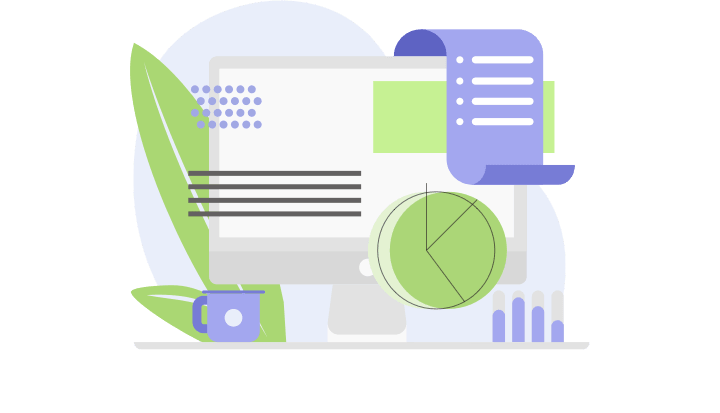
For example, if the situation was around investment, the benefits would include “return-on-investment (ROI)” as a parameter. Instead, if the situation was around implementing a new initiative, the benefits could include profit, market share, and customer satisfaction as some parameters. Let us look at some commonly seen decision frameworks and understand how they work.
Multi-Criteria Analysis

Instead of pulling back decision power after a slipup, hold people accountable for the decision, and coach them to avoid repeating the misstep. Similarly, in all but the rarest of cases, leaders should resist weighing in on a decision kicked up to them during a logjam. From the start, senior leaders should collectively agree on escalation protocols and stick with them to create consistency throughout decision making framework the organization. This means, when necessary, that leaders must vigilantly reinforce the structure by sending decisions back with clear guidance on where the leader expects the decision to be made and by whom. If signs of congestion or dysfunction appear, leaders should reexamine the decision-making structure to make sure alignment, processes, and accountability are optimally arranged.
- In a 2×2 matrix, input your priorities based on whether they must be completed with high or low urgency and are of high or low importance.
- When identifying the decision to be made, it is important to involve key stakeholders who will be impacted by the outcome.
- DailyBot is the asynchronous productivity tool that integrates seamlessly with chat platforms like Slack, Google Chat, Discord, and Microsoft Teams, making it the perfect companion for remote teams.
- British product designer, Stuart Pugh, introduced a mathematical approach to ranking options with multiple characteristics (dimensions) and called it the Decision Matrix method.
- This methodical approach is often used in complex decision-making scenarios where a systematic evaluation process is crucial for reaching an optimal solution.
Complete list of frameworks similar to DACI and RACI

A key action in this step is determining the kinds of boundary organizations or processes that are needed. By understanding and following these key components of decision-making frameworks, individuals and organizations can navigate complex decision-making processes with greater clarity and confidence. These frameworks provide a structured and systematic approach that enhances the quality of decisions and increases the likelihood of achieving desired outcomes. In today’s fast-paced world, effective decision-making is crucial for individuals and organizations alike. With the multitude of choices we face on a daily basis, having a structured approach to decision-making can be a game-changer. This comprehensive guide aims to shed light on decision-making frameworks, their importance, different types, implementation steps, overcoming challenges, and the role of technology in enhancing decision-making processes.

DACI Decision-Making
Leaders must exemplify the decision-making virtues they wish to instill within their teams. The framework must be tailored to support the organization’s overarching business strategy. When introducing a decision-making framework, it’s essential to execute it in synchronization with the company’s objectives and operational reality.
Contributors are the team members providing input, and possibly work, on a project. They should be proactively offering their expertise, not waiting https://www.bookstime.com/ for the driver to pull them in. With a well-built collaborative working environment you can successfully deliver customer centric products.
- The agencies may be principal leaders, or facilitators, or deal-makers, or they may act as a backstop using their legal authorities, with regional, state, or other participants taking the leadership role.
- This is probably the simplest, yet one of the more engaging group decision-making tools available.
- Using this decision-making framework, you need to consider each option and list their Benefits, Costs, and Mitigations.
- The SOAR Analysis template prompts you to consider your organization’s strengths and potential to create a shared vision of the future.
- This participation also illustrates the highly collaborative nature of the process, which continues throughout.
- Power BI makes it easy to aggregate your data and create and share reports.
Comparison charts are perfect for collaboration, as they allow you to establish differences between ideas or products and get a full picture of the risks and benefits that come with them. A pros and cons list is a simple but powerful decision-making tool used to help understand both sides of an argument. Pros are listed as arguments in favor of making a particular decision or action. By creating a list that details both sides of the argument, it becomes easier to visualize the potential impact of your decision. To make your pros and cons list even more objective, it can help to weight each pro and con against the others. You can then present your decision with confidence, making a strong argument for why it’s the right one.
- Transparent decisions and the willingness to share findings also cultivate a sense of involvement and accountability.
- The Six Thinking Hats by Dr. Edward de Bono was created as an alternative to argument, it is designed to help teams explore and develop ideas collaboratively.
- There are only so many people to whom you can pitch your product or service, so we usually recommend choosing quality over quantity, especially if you run a small business.
- Looking at our board in a new light, we may conclude that an Airplane is more suitable.
- Each step identified in Figure 4-1 of Phase 1 now includes specific actions and outputs/outcomes for that action (see key).
- Team members should consider themselves co-owners of the final decision, not just people who were asked to weigh in.
Pareto Efficiency is highly relevant in economics, public policy, and resource allocation scenarios where optimal outcomes are sought with limited resources. This framework is particularly beneficial in product development, innovation, and any scenario where user-centric solutions are sought. This framework is particularly beneficial in rapidly changing environments like technology and business, where learning from past decisions and adapting is crucial.

